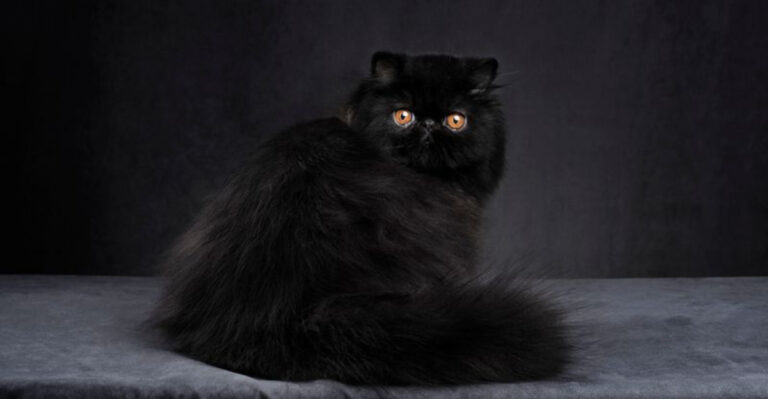14 Signs You’ve Created A Life Where Your Cat Feels Secure
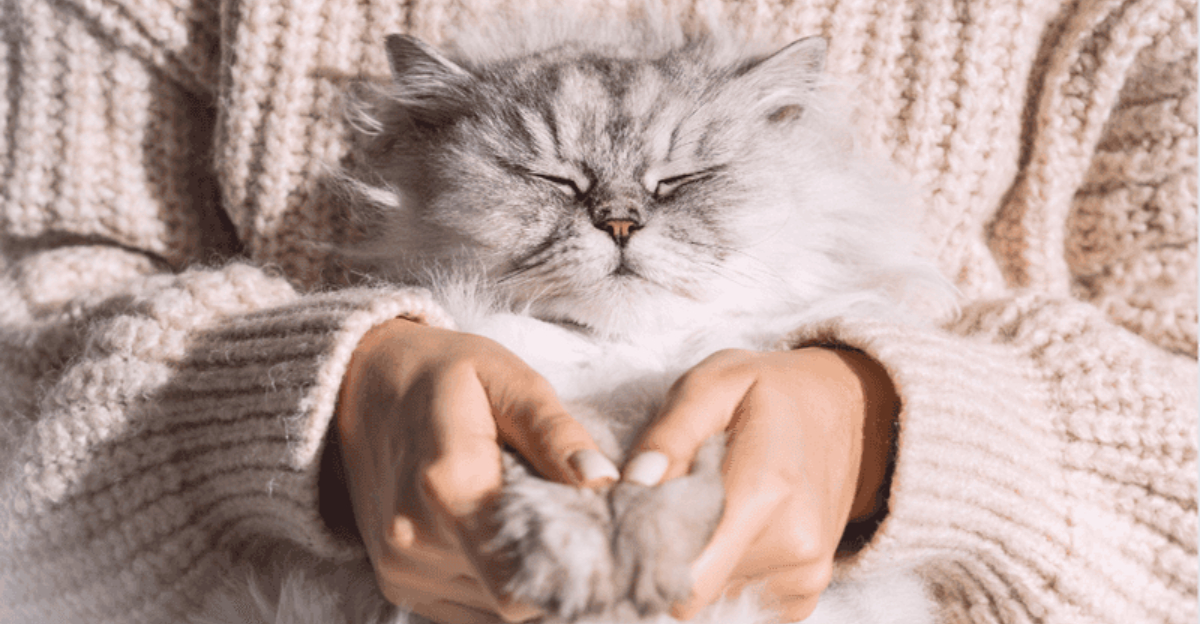
Cats are mysterious creatures with complex emotional needs. Creating an environment where your feline friend feels safe isn’t just about food and shelter, it’s about understanding their unique psychology. When cats feel secure, they show it through subtle behaviors and body language that might surprise even seasoned pet parents. Ready to discover if your home is truly a cat paradise?
1. Slow Blinks During Cuddle Time
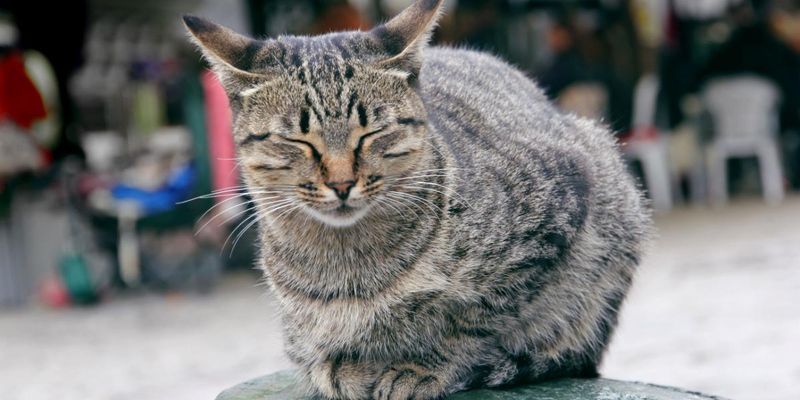
Those half-closed eyes during your evening snuggle sessions aren’t just your cat being sleepy. Feline experts call this the “cat kiss”—a powerful sign of trust and contentment.
When cats feel vulnerable around someone they trust, they’ll deliberately close their eyes, showing they feel safe enough to temporarily give up their vigilance. Next time your kitty slow-blinks at you, try blinking back slowly. You’re speaking love in cat language!
2. Belly Exposure Without Fear
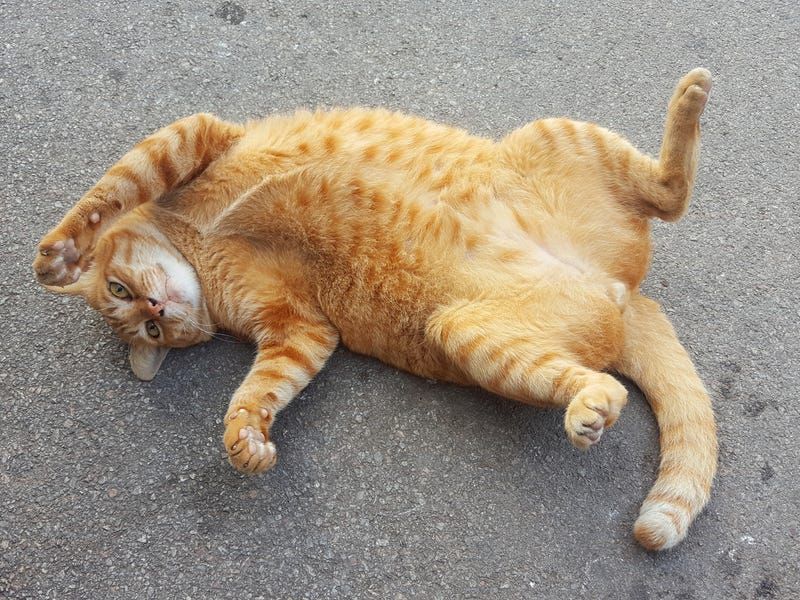
A cat rolling over and exposing their belly isn’t necessarily asking for tummy rubs. Actually, it’s the ultimate display of vulnerability and trust in the feline world.
Wild cats protect their vital organs at all costs, so when your kitty lounges belly-up in the middle of the living room, they’re essentially saying, “I feel completely safe here.” This precious moment shows your home has become their sanctuary—a place where letting down their guard feels natural.
3. Regular Deep Sleep Cycles
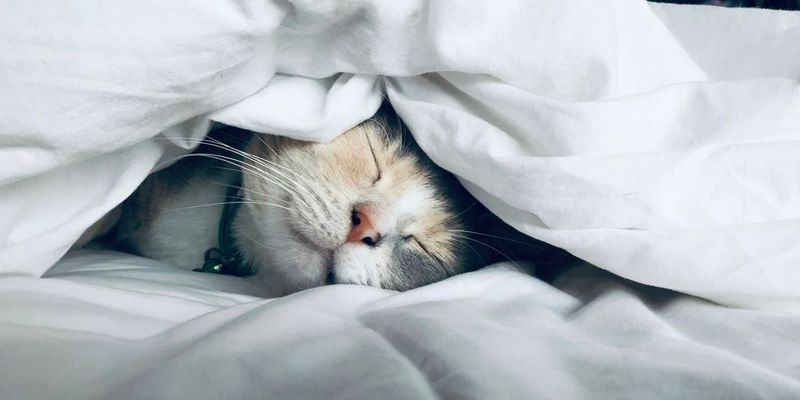
Notice your cat sprawled out, completely zonked with little twitching paws? That’s REM sleep—the deepest kind—and cats only enter it when they feel absolutely secure.
In the wild, cats rarely sleep deeply because they remain alert to potential dangers. Your kitty cycling through full sleep phases, complete with those adorable dream twitches, means they trust their environment completely. Your home has become the safe haven where they can truly rest.
4. Confident Vertical Territory Claiming

Cats are natural climbers who feel safest when they can survey their domain from above. A secure cat boldly claims high perches around your home without hesitation.
Watch how your feline friend navigates bookshelves, cat trees, or window sills. Do they leap confidently and relax up high? This vertical exploration indicates they feel ownership of their space. By providing these elevated spots, you’ve created a three-dimensional territory that satisfies their instinctual need for safety through height.
5. Playful Behavior Without Startling

Playtime reveals volumes about your cat’s sense of security. A truly comfortable cat engages in full-throttle play—pouncing, leaping, and chasing—without constantly checking their surroundings.
Insecure cats interrupt play to investigate small noises or movements, but your confident kitty stays focused on the feather wand or toy mouse. This uninhibited play behavior means they’ve categorized your home as a safe zone where they can let their guard down completely and embrace their natural hunting instincts.
6. Consistent Grooming Routines
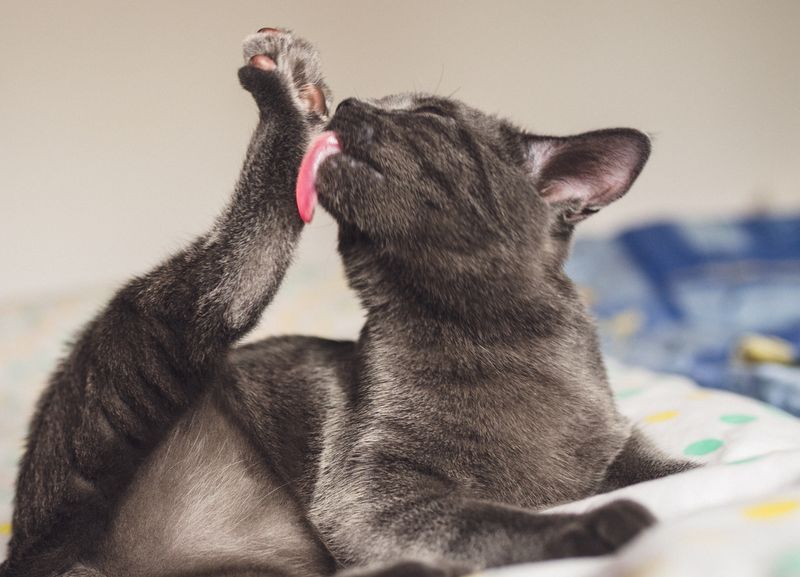
Regular grooming sessions indicate your cat feels safe enough to engage in maintenance behaviors. Stressed cats often neglect grooming or groom excessively to self-soothe.
Your relaxed kitty taking time for thorough bath sessions—those methodical licks from ears to tail—shows they’re comfortable in their surroundings. This meticulous self-care routine requires vulnerability; they must temporarily ignore their environment to focus on cleaning. It’s a powerful sign they trust your home’s safety.
7. Greeting You At The Door
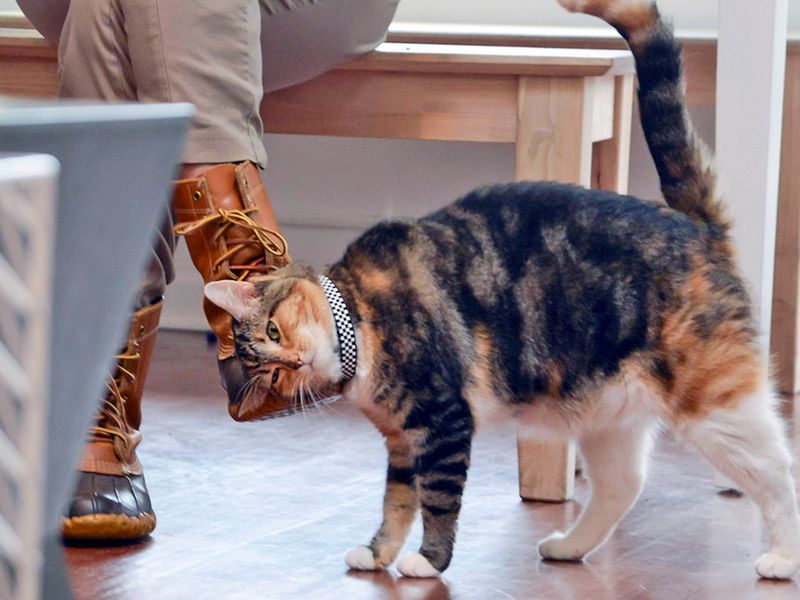
That little furry welcoming committee when you arrive home speaks volumes about your cat’s security level. Cats who feel unsafe typically hide when doors open—a potential threat could enter!
Your confident kitty not only acknowledges your return but actively celebrates it with meows, rubs, or even treats brought as gifts. This greeting behavior means they’ve established you as a safe, consistent part of their territory. Your presence enhances their security rather than threatening it.
8. Vocal Conversations With You
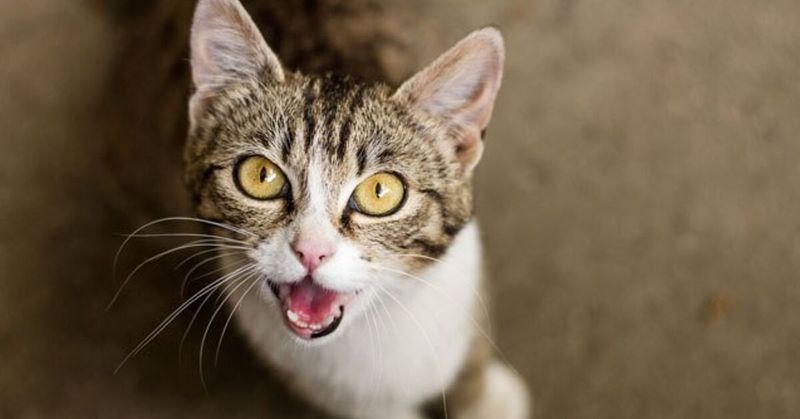
Chatty cats are confident cats! Those melodious meows, chirps, and trills directed at you represent sophisticated communication attempts from a secure feline.
Vocalization makes cats momentarily vulnerable in the wild, potentially revealing their location to predators. When your kitty freely converses with you throughout the day, they’re demonstrating complete comfort in their environment. This vocal interaction shows they view you as a responsive, trustworthy companion worth communicating with.
9. Predictable Bathroom Habits

Consistent litter box use might seem basic, but it’s actually a profound indicator of feline security. Cats are incredibly particular about elimination—it’s when they’re most vulnerable in the wild.
A cat who reliably uses their litter box without accidents is saying, “I know exactly where my bathroom is, and I feel safe using it.” Stress or insecurity often manifests as inappropriate elimination. Your kitty’s bathroom regularity confirms they understand and trust the resources and routines you’ve established.
10. Kneading Behavior On Soft Surfaces
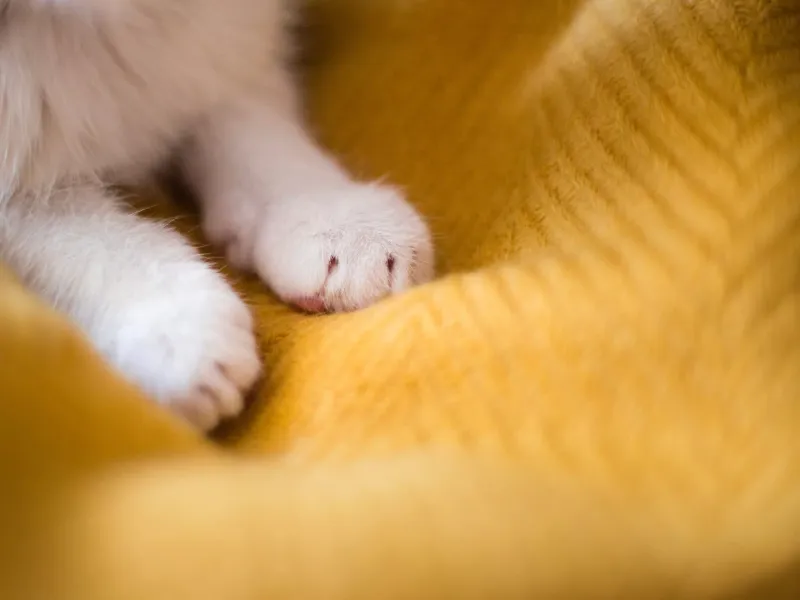
That rhythmic pushing of paws against your lap, blankets, or pillows—often called “making biscuits”—is a behavior rooted in kittenhood nursing. Adult cats only knead when feeling exceptionally content and secure.
This instinctual motion releases endorphins and marks surfaces with scent glands in their paws. When your cat kneads on your belongings (or you!), they’re not just showing affection—they’re claiming their comfortable territory and expressing deep contentment with their living situation.
11. Relaxed Tail Positions
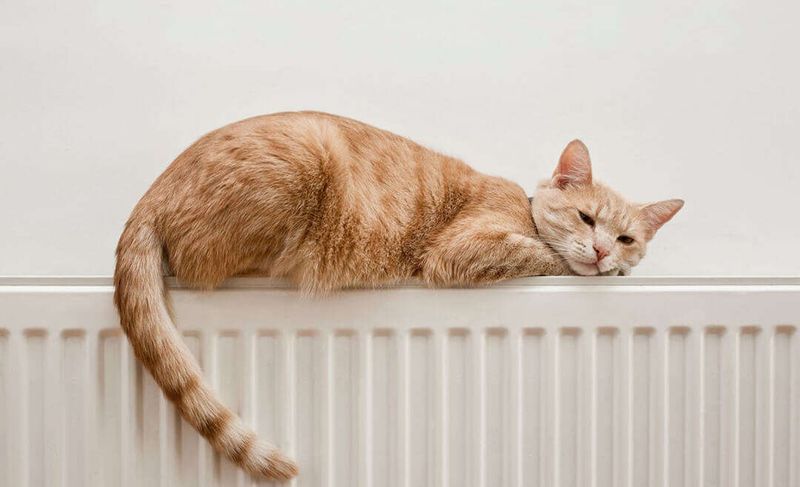
A cat’s tail is their emotional barometer, and secure cats display specific tail postures. The gently raised tail with slight curve at the tip—sometimes called the “question mark tail”—signals peak confidence.
Even at rest, notice how your content kitty’s tail remains loose rather than tucked or puffed. This relaxed tail carriage means they’re not anticipating threats or feeling the need for defensive postures. Your environment has earned their complete trust, allowing them to physically express their emotional ease.
12. Bringing You “Gifts”
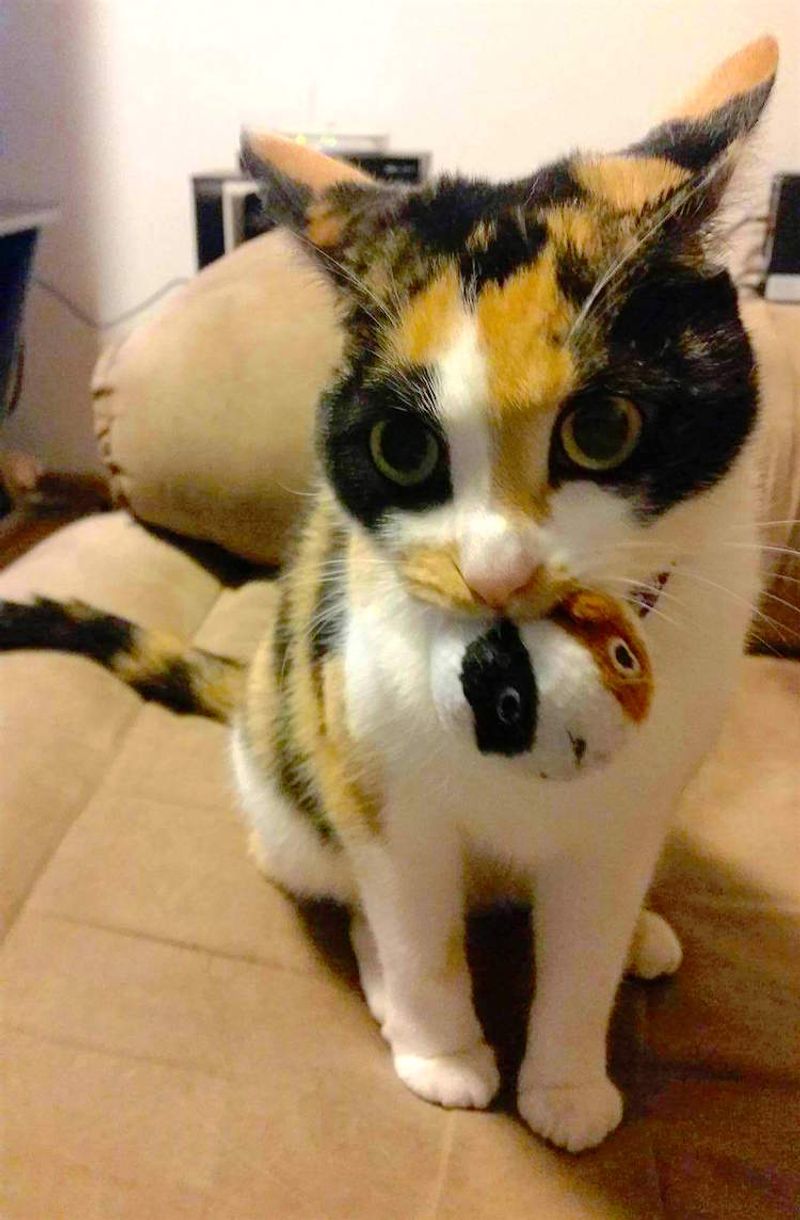
Finding toy mice at your bedroom door or—for outdoor cats—actual hunting trophies might seem strange, but it’s actually a tremendous compliment! This gift-giving behavior demonstrates deep trust and inclusion.
When cats bring you presents, they’re treating you as part of their family group. In feline social structures, providing food or teaching hunting skills happens only within secure relationships. Your cat is essentially saying, “You’re my trusted family, and I want to share my resources with you.”
13. Synchronized Sleeping Patterns
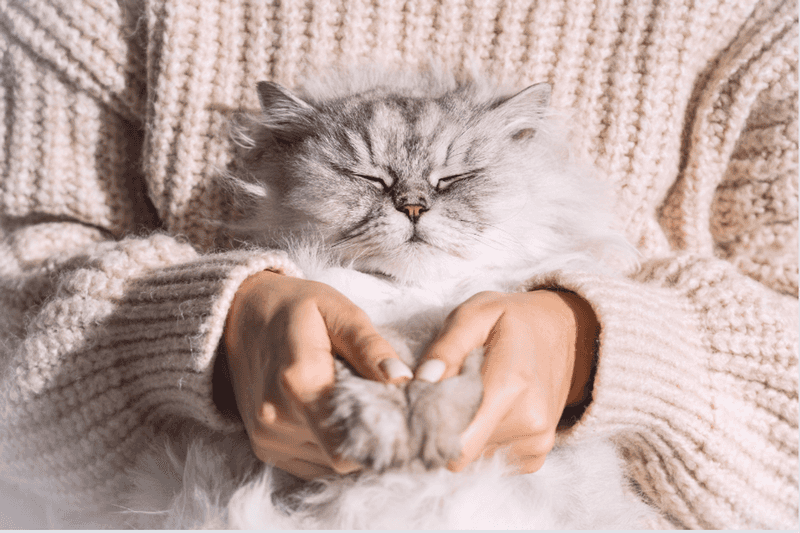
Has your cat adapted their sleep schedule to match yours? This synchronization is a powerful sign of security and bonding. Cats naturally prefer being active at dawn and dusk, their prime hunting times.
A cat who adjusts to sleep when you sleep demonstrates they prioritize social connection over instinctual patterns. They’ve recognized your routine as stable and safe enough to override their natural rhythms. This adaptation shows they value being part of your “pride” and trust your leadership.
14. Maintaining Healthy Weight And Appetite
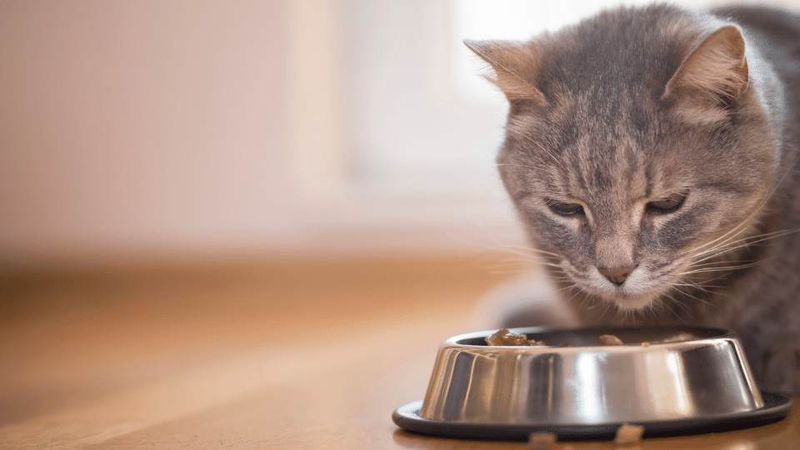
A consistently good appetite and stable weight indicate your cat feels fundamentally secure in their environment. Stress profoundly affects feline eating habits, causing either refusal of food or anxious overeating.
Your cat’s willingness to eat regular meals without gulping or skipping indicates they don’t feel the need to hoard resources or prepare for scarcity. This steady relationship with food shows they trust the predictability of your care. Their physical health directly reflects their emotional security.



